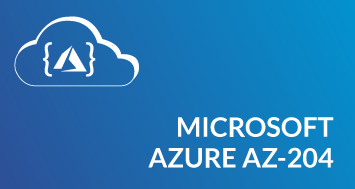Microsoft Azure Developer Associate Training (AZ-204)
Microsoft Azure Developer Associate (AZ-204) course is designed to help you prepare for the Exam AZ-204: Developing Solutions for Microsoft Azure, which is required to attain the Azure Developer Badge (Associate-level). You will be able to demonstrate comprehensive knowledge of Azure development using IaaS, PaaS solutions, and related Storage, Security, and Integration Services.
5k + Satisfied learners Live Classes